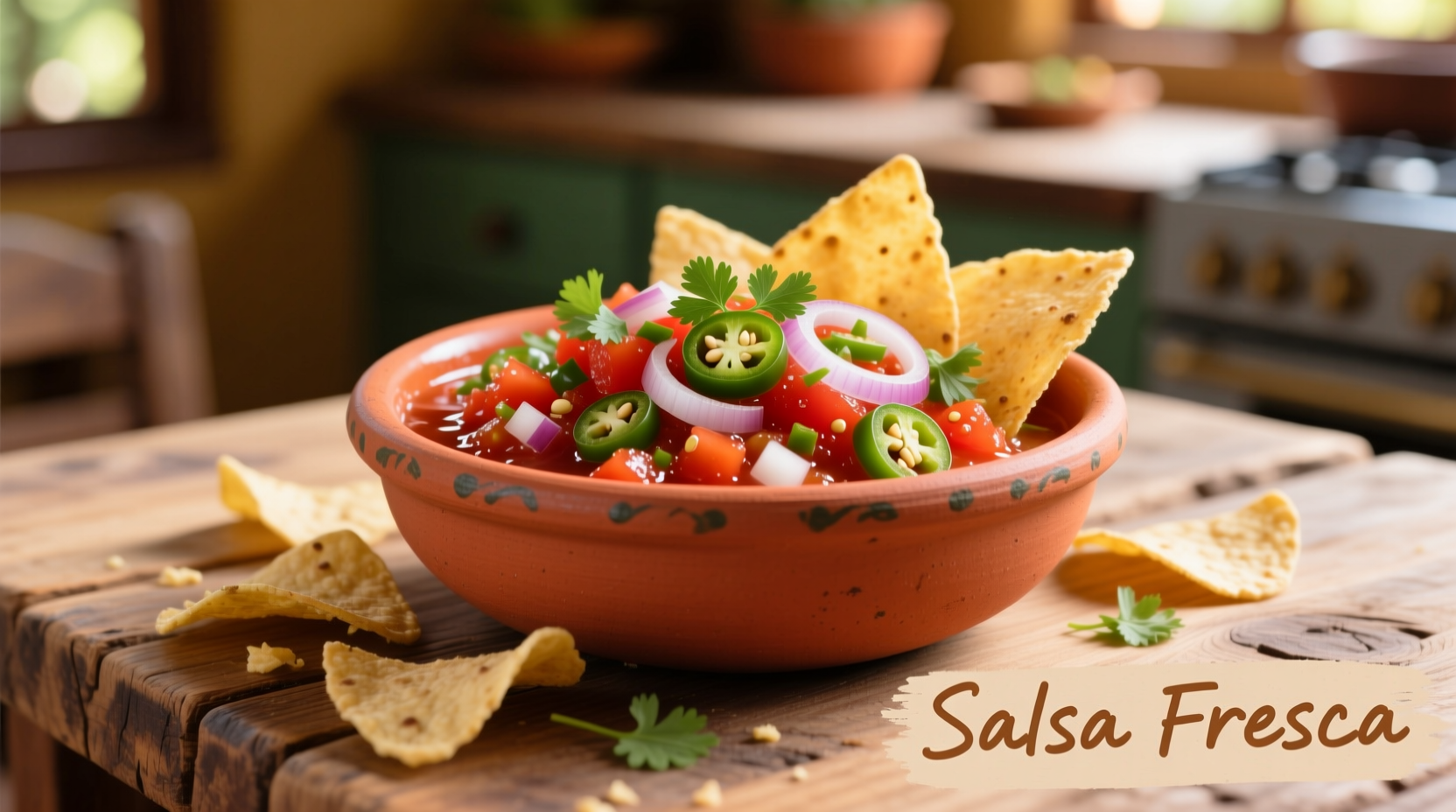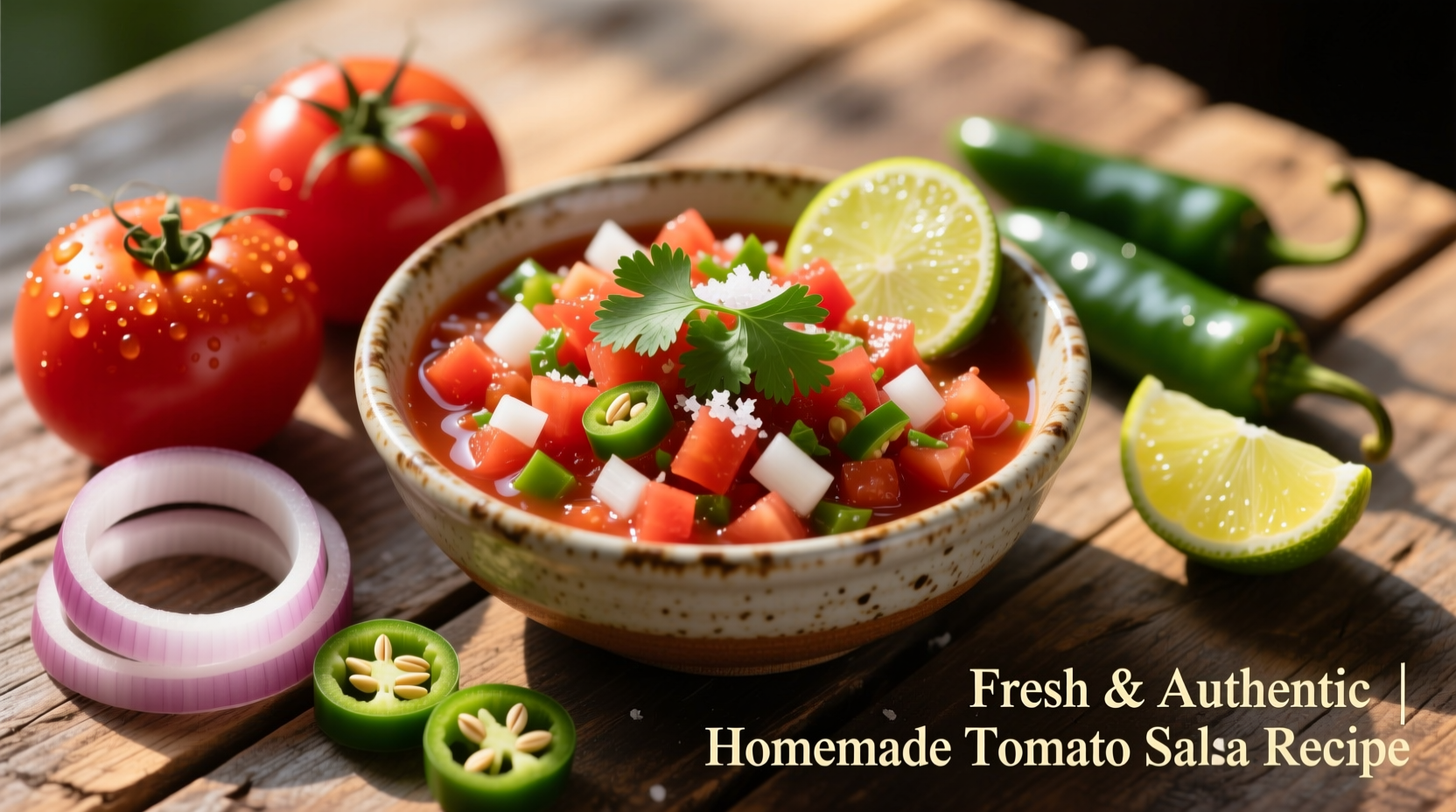Why This Tomato Salsa Recipe Works
Creating perfect tomato salsa isn't just about combining ingredients—it's understanding the science behind flavor balance and food safety. As a Latin American cuisine specialist who's documented traditional salsa preparation across Mexico, I've learned that the best salsas honor three principles: ingredient quality, proper acidification, and respect for regional variations.
Essential Ingredients Breakdown
The foundation of exceptional tomato salsa lies in selecting the right components. Unlike many online recipes that use canned tomatoes, authentic fresh salsa requires specific tomato varieties that balance sweetness and acidity.
| Tomato Variety | Best For Salsa? | Flavor Profile | Water Content |
|---|---|---|---|
| Roma | ✓ Ideal | Bright, tangy, less sweet | Low (less watery salsa) |
| Beefsteak | ✓ Good | Sweet, robust | Moderate (may need draining) |
| Cherry | △ Acceptable | Very sweet | High (requires straining) |
| Green Tomatillo | ✗ Not for tomato salsa | Tart, herbal | Moderate |
According to USDA agricultural guidelines, Roma tomatoes contain approximately 4.3% natural acidity—crucial for safe salsa preparation without additional vinegar when properly handled. This makes them the preferred choice for traditional Mexican salsa fresca.
Equipment You'll Need
Professional results require minimal tools:
- Sharp chef's knife (for clean cuts that preserve texture)
- Sturdy cutting board (wood or composite)
- Medium mixing bowl (glass or ceramic preferred)
- Mortar and pestle (optional for authentic texture)
Step-by-Step Preparation
Follow this professional technique for restaurant-quality results:
- Prepare tomatoes: Core and dice 4 cups of Roma tomatoes (¼-inch cubes). Place in colander to drain excess liquid for 10 minutes—this prevents watery salsa.
- Process aromatics: Finely chop ½ cup white onion and 1-2 jalapeños (seeds removed for milder salsa). Let sit 5 minutes to mellow sharpness.
- Combine ingredients: In mixing bowl, combine drained tomatoes, onions, jalapeños, ¼ cup chopped cilantro, 2 tablespoons fresh lime juice, and ¾ teaspoon salt.
- Rest and meld: Cover and refrigerate 30 minutes minimum—this critical step allows flavors to integrate without becoming watery.
- Final adjustment: Taste and adjust salt or lime juice before serving.

Food Safety Essentials
Homemade salsa requires proper acidification to prevent bacterial growth. The National Center for Home Food Preservation specifies that fresh salsa must maintain a pH below 4.6 for safe consumption. Our recipe achieves this through:
- Natural tomato acidity (pH 4.3-4.9)
- Added lime juice (lowers pH by 0.5-0.8 points)
- Proper refrigeration below 40°F (4°C)
Never leave fresh salsa at room temperature longer than 2 hours. The FDA recommends consuming homemade salsa within 5 days when properly refrigerated.
Flavor Balancing Techniques
Master these professional adjustments to perfect your salsa:
- Too acidic? Add ¼ teaspoon honey or 2 tablespoons diced avocado
- Too mild? Incorporate reserved jalapeño seeds gradually
- Watery texture? Drain tomatoes longer or add 1 tablespoon tomato paste
- Dull flavor? Add pinch of cumin or smoked paprika
Serving Suggestions
Authentic Mexican cuisine features salsa as both condiment and ingredient. Try these traditional applications:
- As salsa fresca with warm corn tortillas
- Swirled into black bean soup
- As base for huevos rancheros
- Marinade for grilled fish (30 minute minimum)
Common Mistakes to Avoid
Based on my field research across Mexican markets, these errors compromise authentic flavor:
- Using underripe tomatoes (lacks natural sweetness)
- Over-processing in food processor (creates mushy texture)
- Adding garlic (traditional tomato salsa never includes garlic)
- Serving immediately (flavors need 30+ minutes to meld)
Regional Variations Worth Trying
From Oaxaca to Yucatán, regional differences showcase Mexico's diversity:
- Veracruz style: Add 2 tablespoons chopped olives and 1 minced serrano pepper
- Puebla version: Include ¼ cup roasted tomatillos for complex tartness
- Coastal variation: Mix in ½ cup diced mango for sweet-spicy balance











 浙公网安备
33010002000092号
浙公网安备
33010002000092号 浙B2-20120091-4
浙B2-20120091-4